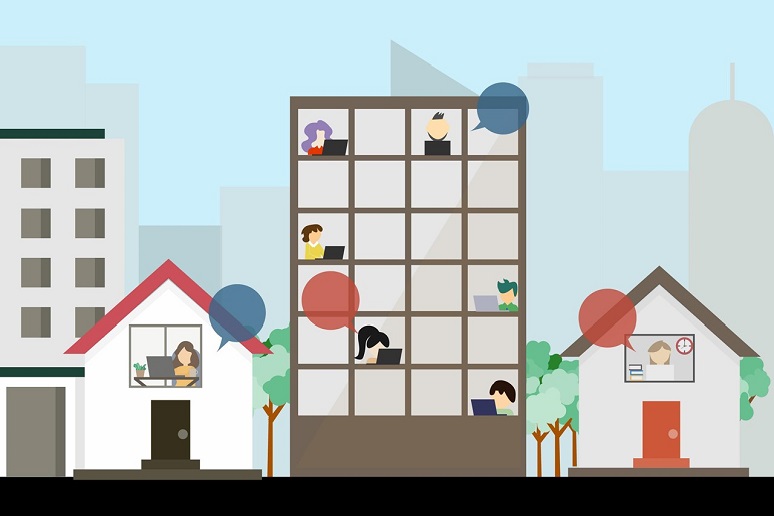In my new role at Omdia, I have the opportunity to cover a broad swath of the communications market, ranging from on-premises PBX sales, SIP trunking, and SBC purchases to unified communications as a service (UCaaS) offerings, focusing on those providers who include telephony as part of their overall UCaaS solution. I still get to write for NoJitter.com, and the organizers at Enterprise Connect have graciously asked me to once again do the infamous session where
Phil Edholm and I team up to contrast and compare Cisco vs. Microsoft vs. Zoom.
While researching a recent customer inquiry, the saying “A rising tide lifts all boats” came to mind. This well-known aphorism implies that in a good economy, all participants should benefit. During the COVID pandemic, many companies in our industry saw banner earnings, particularly those that offered UCaaS, CCaaS, and CPaaS solutions. Even companies that were expecting continued on-premises PBX and telephony handset declines had some good news last year as there was pent-up demand that expressed itself in Q3 with higher sales. Handset sales would have been even higher had the supply chain been able to deliver them.
Changing Working Patterns are Impacting SIP Trunking Revenues
One of the outcomes of the pandemic is that working patterns have changed; many people now meet and collaborate almost exclusively through one of the UC solutions like Zoom, Webex, Teams, and a host of others.
I know this is true for me, and perhaps it is true for you.
Try a little thought experiment by asking yourself two questions: “When was the last time I made a phone call from my office desk phone or my employer’s softphone app?” and “When was the last time I was hunched over a flying saucer-shaped phone in the conference room or even just dialed into an audio conference ?”
If your answers are like mine, both are in a distant past. The last time I was in an audio-only conference was prior to the pandemic, attending an earnings call . The last time I made a business phone call using my office phone was over two months ago. Many knowledge and information workers just don’t use these audio-only communications mediums nearly as much as they did prior to the pandemic.
And here’s the point: revenues for SIP trunking, which is primarily used to connect IP communications systems to the PSTN, are either flat or declining for a number of trunking providers I’ve spoken to.
The issue is not that fewer SIP trunks are being deployed. Rather, the issue is that SIP trunks are being used a lot less. When a SIP trunking provider invoices its customers, there are generally two main kinds of charges on the bill: an SIP channel connectivity charge, and a metered usage charge . The monthly usage charge is a significant percentage of the overall SIP trunking revenue, and when usage declines, then total revenues decline even when the overall number of trunks are still growing.
What most trunking providers are telling me is that while SIP trunks are still rolling out at a rapid pace, the usage revenue associated with the SIP trunk is slowing at a rate that makes total SIP trunking revenues about flat or puts them into a slight decline.
We’ll have much better numbers in time for Enterprise Connect 2022 in March 2022, once the SIP trunking vendors report their 2021 Q4 revenues.
Is There a Knock On Effect for SBC Providers?
One would think that with SIP trunking usage in decline, the SBC providers would also face a decline. However, that does not appear to be the case, given preliminary data from these vendors. Steady growth seems to be occurring in the SBC market.
Will SBC port growth continue even as trunking utilization continues to fall? That is something we will watch over the next few quarters. Growth seems to be continuing due to a perpetual transition to UCaaS solutions coupled with “bring your own carrier” (BYOC) connectivity. Our next SBC market tracker will appear in early March containing Q4 2021 and 2021 year-end total SBC sales, and we will have more than anecdotal evidence then.
One of the really interesting data points from service providers is that selling trunking and SBCs for UCaaS-based PSTN connectivity fosters discussions around add-ons, including contact center and other high-value services. So, while trunking revenue may decline or remain relatively flat, SIP trunking can actually pull other products with it and increase overall revenues significantly if it is part of a package or bundle. The current trend for organizations to migrate to UCaaS and BYOC is a boon for service providers who are positioned to take advantage of both waxing and waning SIP trunking tides as market conditions shift.
Enterprise Connect 2022
Telephony will be part of the annual session Phil Edholm and I will deliver at Enterprise Connect 2022 in Orlando, FL, this upcoming March 21 – 24. In addition to comparing and contrasting Cisco, Microsoft, and Zoom, this year we are adding RingCentral to the mix, given Ring’s proclivity to partner with most of the incumbent telephony providers to migrate their on-premises telephony base to Ring’s UCaaS cloud service. It will be a fun and informative session, and we look forward to seeing you there!










